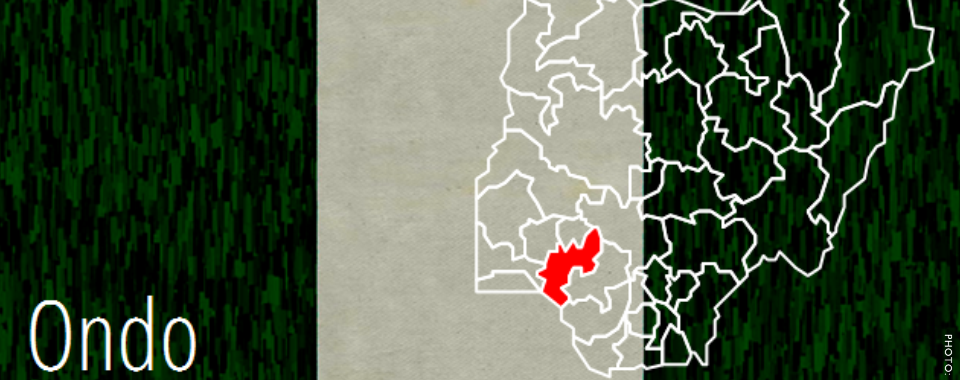BY NATE HAKEN AND PATRICIA TAFT*
Ondo state has a population of approximately 3.44 million according to the most recent census (2006). The majority are of Yoruba descent, with a sizable minority of those from Ijaw subgroups, particularly along the coast. Ondo derives most of its revenue from the production of cocoa, palm oil, rubber, lumber, and cassava. Approximately 65% of the labor force is employed in the agrarian sector. The state is also rich in oil and minerals.
Violence in Ondo has historically been relatively low in comparison to the other Niger Delta states according to Nigeria Watch data.
After the 2012 gubernatorial election, in which Olusegun Mimiko was re-elected, the losing party raised concerns about alleged election irregularities and intimidation. The next gubernatorial elections are slated for 2016.
In early 2014, most incidents in Ondo State involved domestic and interpersonal violence. In May, a clash between rival cult groups reportedly left one person dead. Overall, much of the violence in Ondo state was related to instances of petty crime and kidnappings.
This Conflict Bulletin provides a brief snapshot of the trends and patterns of conflict risk factors at the State and LGA levels, drawing on relevant data made available from the P4P Digital Platform for Multi-Stakeholder Engagement (www.p4p-nigerdelta.org). It represents a compilation of the data from sources listed below, not necessarily opinions of FFP or any other organization that collaborated on the production of this bulletin.
The summaries draw on data collected by FFP’s UNLocK, the Council on Foreign Relations’ NST, WANEP Nigeria, CSS/ETH Zurich, NEEWS/TMG, Nigeria Watch, and ACLED integrated on the P4P platform. They also draw on data and information from “Violence in Nigeria: Patterns and Trends,” by Patricia Taft and Nate Haken (Springer Press, April 2015).
* Hannah Blyth also contributed to this report.
Download the full report in PDF format
.
.
